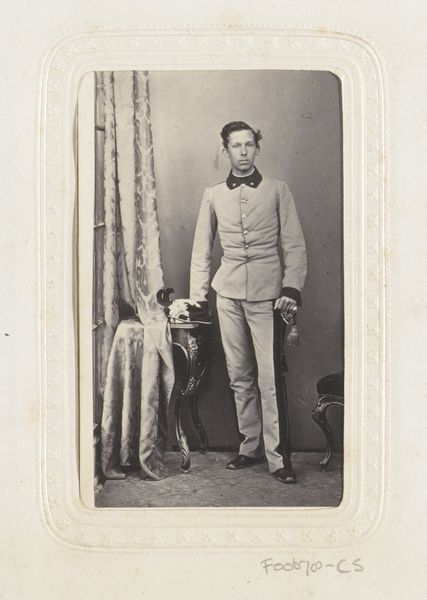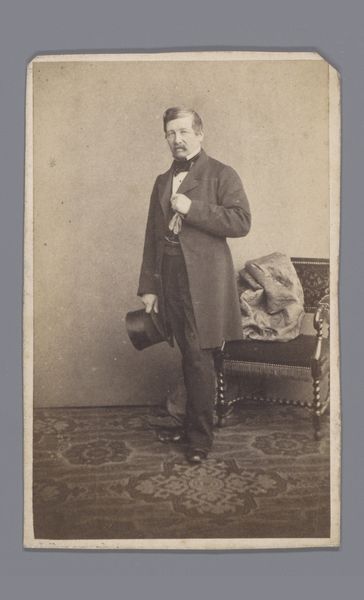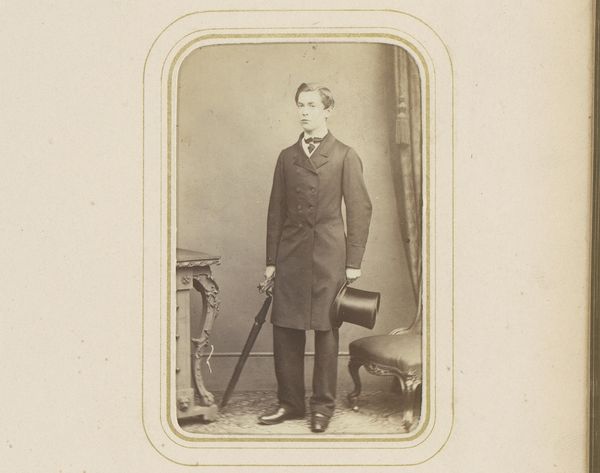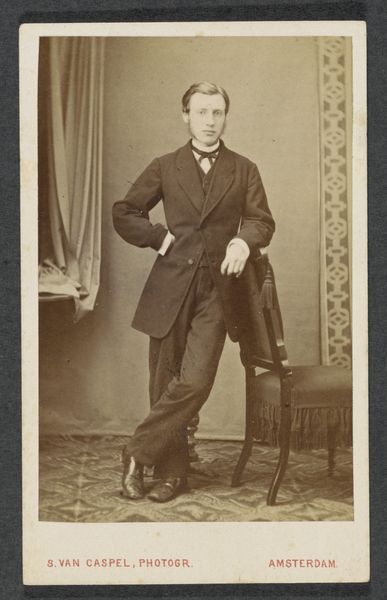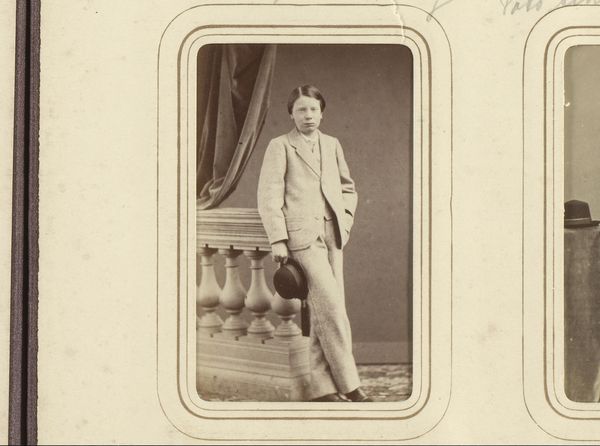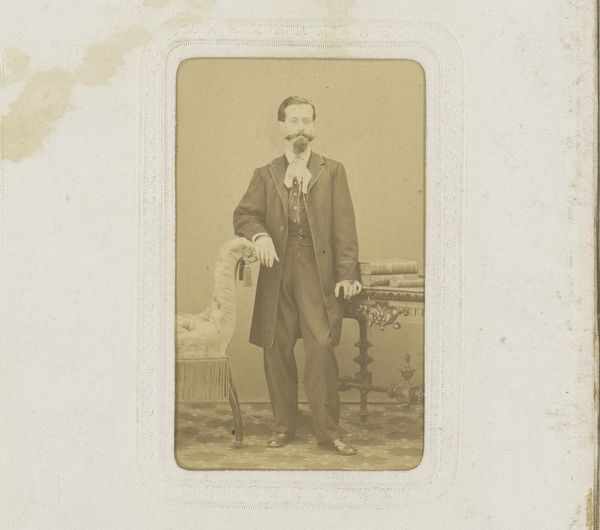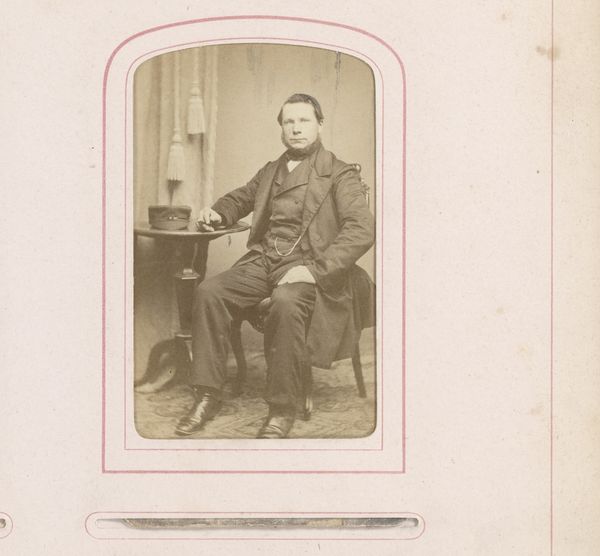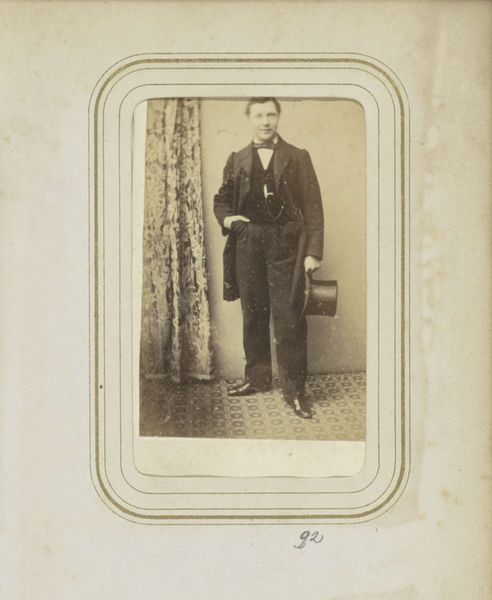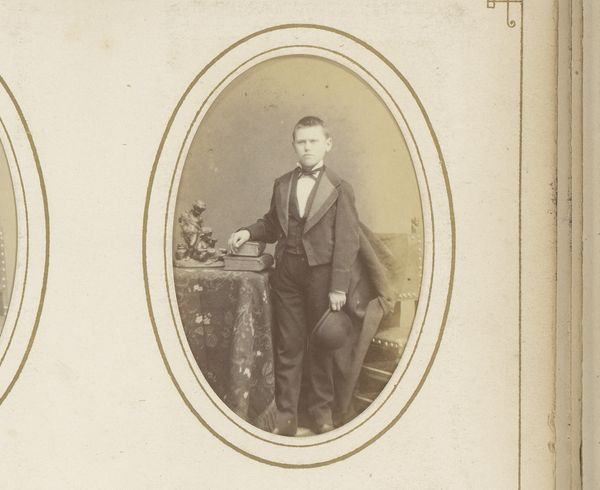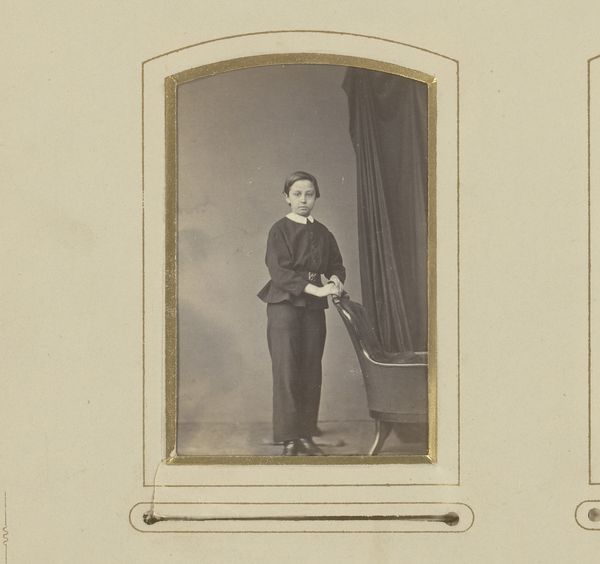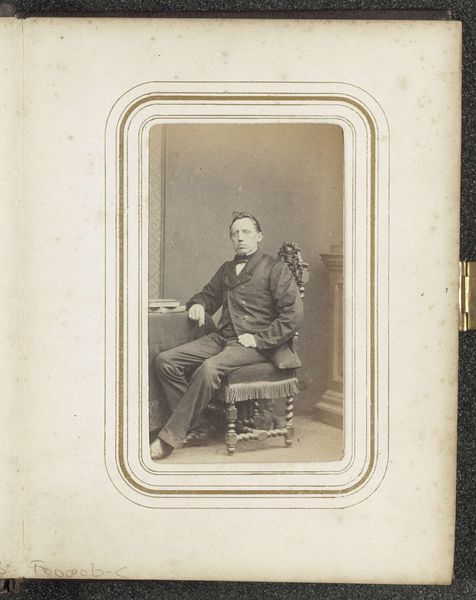
photography, gelatin-silver-print
#
portrait
#
photography
#
gelatin-silver-print
#
genre-painting
#
realism
Dimensions: height 87 mm, width 53 mm
Copyright: Rijks Museum: Open Domain
Curator: Let's take a look at this intriguing photograph. It's titled "Portret van een staande militair," or "Portrait of a Standing Soldier," attributed to B. Joseph Fechner, and it was made sometime between 1860 and 1880, using the gelatin-silver print process. Editor: Immediately, what strikes me is the overall tonal range—the delicate gradations of grey, nearly monochromatic, give it a very formal and stoic feel. Curator: The realism is undeniable; photographs from this period provide an incredible record of social classes and identities. The man's uniform, the style of the table and chair – they tell us a great deal about the material culture and perhaps even the political climate of the time. Notice how carefully posed the sitter is, almost as if consciously trying to project a desired persona. Editor: And the texture! Look at the detail captured in the carpet and drapery; then juxtapose that with the rather smooth, almost idealized depiction of his face. There's a real contrast happening between surfaces, contributing to a visually captivating experience. Curator: Exactly. The rigid pose combined with those material signifiers – the sword, the decorative table – reinforces a societal ideal, projecting an image of order and authority at a time when European society was undergoing seismic shifts and industrial revolutions. Photography democratized portraiture, but didn't necessarily alter its conventions regarding representation and the display of power. Editor: Perhaps the way the light catches his buttons versus the dull sheen on the sword hints at a quiet internal conflict, a battle between duty and personal feeling? Or am I projecting too much onto the subject based on what I read from the carefully balanced asymmetry of the scene? Curator: No, I think you’re right on target. This wasn’t a snapshot, but a carefully constructed image reflecting the values of the period and, likely, the sitter’s personal aspirations within a specific social hierarchy. Editor: Well, I'm certainly more conscious now of the carefully composed elements within this study in monochrome— the way a stark light contrasts and enhances the overall composition. Curator: Yes, indeed. Thinking about photography as an act shaped by political and economic structures, helps us interpret these images not merely as historical records, but as tools of representation.
Comments
No comments
Be the first to comment and join the conversation on the ultimate creative platform.
